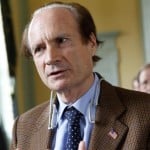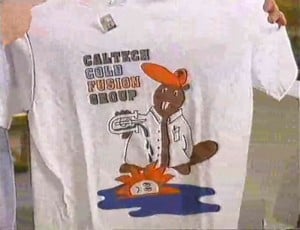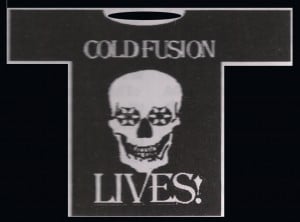“So, the puzzle looks approaching the resolution now. The long lasting excess heat phenomena, currently being observed by several groups in Japan, Italy, USA, etc., will be understood in the extension of their research.
When we will trace inversely in time, we will find the original point of perspective in the Fleischmann-Pons work at 1989.” –Dr. Akito Takahashi
The passing of Martin Fleischmann has sounded throughout the noosphere, where lightspeed assisted in the collective and simultaneous mourning for a Lion of Science who dared follow truth, turning away from the insults of lesser minds without regret, and without reward.
The loss is felt strongly by his family, his friends, and fellow scientists who worked with him on over two-decades of cold fusion research where his intellect and integrity left an indelible mark on multiple programs around the world.
Indeed, Martin Fleischmann and Stanley Pons created the field of condensed matter nuclear science. Without the public announcement of their discovery in 1989, we might not have the new generation of experimentalists and inventors working to bring this technology to fruition.
 After the recent news, Andrea Rossi, inventor of the Energy Catalyzer, a commercial steam generator now in development based on nickel-hydrogen exothermic reactions, an extension of the original electrolytic palladium-deuterium systems, noted that “Fleischmann and Pons were not the first to witness” these mercurial energy-producing reactions, but they “have been the pioneers to speak about the so called ‘Cold Fusion’.”
After the recent news, Andrea Rossi, inventor of the Energy Catalyzer, a commercial steam generator now in development based on nickel-hydrogen exothermic reactions, an extension of the original electrolytic palladium-deuterium systems, noted that “Fleischmann and Pons were not the first to witness” these mercurial energy-producing reactions, but they “have been the pioneers to speak about the so called ‘Cold Fusion’.”
He said in a previous interview with James Martinez that ‘it was the announcement of their discovery in 1989 that was the “spark that ignited the fire”’ in his own research. [read]
“All their attempts failed to produce the real big energy, but the idea to pursue low-energy nuclear reactions has been further followed by many others, myself included“. –Andrea Rossi
Martin Fleischmann was born in Czechoslovakia in 1927, but fled the looming approach of war to Great Britain as a child. As an adult, he traveled the world creating several laboratories, consulting and collaborating with scientists on every continent.
Fleischmann’s influence was particularly felt in scientific circles in Japan where cold fusion science received unprecedented support from academia, business and government. The 1994 BBC documentary Too Close To The Sun features an historical perspective on that support which included that of Technova Corporation, a subsidiary of Toyota, which funded Drs. Fleischmann and Pons’ continued research at a laboratory in France, after U.S. scientists successfully pilloried the pair, forcing a re-location from the “freedom-loving” American continent to Europe.
 Dr. Akito Takahashi has been involved in the early Japanese cold fusion research as part of the Department of Nuclear Engineering at Osaka University. Now, also associated with Technova, Inc, he is speaking at the NIWeek 2012 conference beginning this week as well as the 17th International Conference on Cold Fusion ICCF-17.
Dr. Akito Takahashi has been involved in the early Japanese cold fusion research as part of the Department of Nuclear Engineering at Osaka University. Now, also associated with Technova, Inc, he is speaking at the NIWeek 2012 conference beginning this week as well as the 17th International Conference on Cold Fusion ICCF-17.
Before his trip, Dr. Takahashi took a moment to share what Martin Fleischmann meant to the Japanese program of research:
“You know the NHE (New Hydrogen Energy) project 1994-1998 was funded by Japanese Government. To confirm the excess heat effect (EHE) by F-P’s D2O/Pd electrolysis was the target of NHE.
Fleischmann visited the NHE lab in Sapporo several times to lead and assist the Japanese team. Unfortunately, the NHE team could not firmly reproduce the F-P claim and the NHE project was terminated in 1998. However, a Japanese company, IMURA-Europe, Niece France, under the Toyota Motors, invited Martin Fleischmann and Stanley Pons to continue the ‘cold fusion’ research with Japanese researchers. The effort by the company was also terminated soon.
However Professor Fleischmann, as regarded by Japanese as the initiator of cold fusion research, gave a favorable impression to several tens of remaining JPN cold fusion researchers, especially in universities, and a small number of companies, who have found some positive, albeit irreproducible, data during the NHE and IMURA projects. The remained people have continued research works, both experiments extending to gas-loading method with nano-catalysts and theories on underlying physics, and have accumulated more and more concrete data. So, JPN researchers have sincere respect for Professor Martin Fleischmann to this day.”
In regards to being an influence in research, Dr. Takahashi wrote:
“Of course, Japanese researchers were inspired by the speculation that the dynamic behavior of deuterons fully/over-fully absorbed in metal lattice might cause ‘hither-to-unknown’ and ‘clean-radiation-less’ nuclear energy release. However, the NHE effort was still using the original F-P method (ICARUS device) and metallurgical performances of D(H)-absorption.
After the NHE project, a change of mind pursued ‘dynamic/transient’ adsorption/absorption conditions with nano-fabricated metal composite samples, after the original work by Arata-Zhang based on the idea of Emeritus Prof. Hiroshi Fujita expert of atom-clusters, Osaka University.
The gas-loading method with nano-fabricated samples of pure-Pd, Pd-Ni binary and then Cu-Ni binary nano-particles dispersed in ceramics supporters (ZrO2, SiO2, etc.) have finally provided the present on-going experiments with very reproducible excess heat release and interesting D(H)-isotopic effects probably indicating the nuclear origin of heat evolution. As the electrolysis method, done by the Energetics-SRI-ENEA collaboration, is getting to the similar condition of nano-fractal surface of Pd-metal for meeting ‘large excess heat’, the original F-P cell might have had nano-fractal conditions, albeit accidentally conditioned in uncontrolled way.
So, the puzzle looks to be approaching the resolution now. The long lasting excess heat phenomena, currently being observed by several groups in JPN, Italy, USA, etc., will be understood in the extension of such research line.
When we will trace inversely in time, we will find the original point of perspective in the Fleischmann-Pons work at 1989.” –Dr. Akito Takahashi
After the U.S. had kicked the discoverers of our future energy source out of the country, money from the Toyota empire built them a new laboratory in France. Ironically, Drs. Fleischmann and Pons were interviewed on Good Morning America – from France – in 1994.
 Dr. Jean-Paul Biberian, a cold fusion scientist based in Marseilles, France and Editor-in-Chief of the Journal of Condensed Matter Nuclear Science, wrote of the influence of Martin Fleischmann on French research:
Dr. Jean-Paul Biberian, a cold fusion scientist based in Marseilles, France and Editor-in-Chief of the Journal of Condensed Matter Nuclear Science, wrote of the influence of Martin Fleischmann on French research:
“Martin Fleischmann played a major role at the beginning of Cold Fusion in France. Georges Lonchampt, who was then working at the French Atomic Energy Commission in Grenoble met him and Stanley Pons several times when they were working at IMRA in Sophia Antipolis. Fleischmann gave him full details of the experimental procedure, and even gave him two of their ICARUS 2 cells. Thanks to his help, Longchampt and his colleagues managed to duplicate, at least partly, the original work. Lonchampt was one of the very few who duplicated exactly the Fleischmann and Pons experiment.
Without his help there is no doubt that the initial program started in France in 1989 would have ended quickly after.”
Martin Fleischmann’s influence has not yet been assessed. But as the world turns towards this viable alternative, there will be alot of looking back, and human eyes will see what they want to see.
Martin Fleischmann still lives. I can see him lecture, hear him speak, read his words, and see his face, just as much as I could before Friday August 3, 2012 when he reportedly left the physical world for a freer, larger existence. 0s and 1s dart about the network, framing his presence in the digital space that exists as an external double of our consciousness.
While a virtual visit to Mars is not the same as physically being there, robotic cameras give millions the opportunity to experience a form of space travel to another world. Millions more will meet Martin Fleischmann through his legacy of work, too, as documented by his true peers in the cold fusion community, and available for as long as human civilization exists.
Related Links
NIWeek 2012 Homepage
ICCF-17 Homepage
Watch: Too Close to the Sun 1994 BBC Doc profiles early history of cold fusion underground by Ruby Carat June 7, 2012
Watch: 1994 Martin Fleischmann and Stanley Pons interviewed on Good Morning America – from France! by Ruby Carat June 19, 2012
Media Dopplers by Chad Scoville C-theory.net


